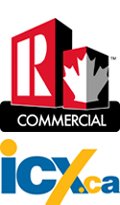Why You Should Consider Joint Ventures for Commercial Real Estate Investments and How to Make Them Successful
 If you're like a lot of investors out there, you might not have access to a large enough pool of cash to get into some of the best investments out there. Sure, you can probably put together a couple of smaller deals, maybe a four unit residential building or a small neighbourhood strip with a convenience store and a dry cleaner - but what about something with a little more scale? What if you could get together with a partner and invest in an industrial property or mid-sized office building? Maybe a 50 or 60 unit apartment complex? Sound interesting?
If you're like a lot of investors out there, you might not have access to a large enough pool of cash to get into some of the best investments out there. Sure, you can probably put together a couple of smaller deals, maybe a four unit residential building or a small neighbourhood strip with a convenience store and a dry cleaner - but what about something with a little more scale? What if you could get together with a partner and invest in an industrial property or mid-sized office building? Maybe a 50 or 60 unit apartment complex? Sound interesting?
Welcome to the world of Joint Ventures. What is a joint venture? The definition of a Joint Venture from Wikipedia:
A joint venture (often abbreviated JV) is an entity formed between two or more parties to undertake economic activity together. The parties agree to create a new entity by both contributing equity, and they then share in the revenues, expenses, and control of the enterprise. The venture can be for one specific project only, or a continuing business relationship ...
What are the benefits of a JV?
- Save money
- Increased pool of resources including money and talent
- Greater opportunities based on increased scope and reach of the JV
- Appearance of increased size might offer more access to deals
- Lack of planning
- Poor organization
- Failure to clearly delineate duties and responsibilities
- Failure to understand and perform duties agreed to
- Smaller investors have less margin for error and therefore small mistakes can be exaggerated and more costly
The Joint Venture Agreement Checklist:
- The date on which the agreement is established and executed.
- The names, addresses and identification of the parties, including the type of business of each member of the joint venture.
- The name under which the joint venture will do business.
- The principal place of business of the joint venture.
- The purpose of the joint venture. If the purpose is to access a specific project, a full description of that project is required.
- The terms of the joint venture: when and how the joint venture is terminated; and, how such items as guarantees, defects, and insurance will be handled after termination.
- A statement that the parties are actually co-ventures for the project whether or not the contract is in the name of all members.
- A declaration that the organization is a joint venture, not a partnership.
- The establishment of a fund by the parties to finance the work, together with the amounts to be contributed by each party, with the fund being deposited in a special bank account under dual control and all progress payments and other revenues being deposited in such account.
- A clause providing that, if additional working capital is required, the parties will proportionally contribute additional funds, as needed and naming the penalty for failure to contribute.
- A declaration of the participation of the parties and percentage in which profits and losses are shared. Usually these percentages are proportional to the contributions to the working fund, but the amount of contribution of funds by parties can be increased or decreased depending on the contributions of equipment or expertise which also must be considered.
- Payment of any fee to the controlling co-venturer or sponsor should be specified; whether a share of the profits in excess of that contemplated is given to the controlling manager or a flat dollar sum is paid.
- If equipment is involved, a specific clause should be inserted especially where the parties contribute varying amounts of equipment.
- The parties to the joint venture should agree to sign all necessary documents relating to the contract, bank loans, bonds, indemnity agreements and the like.
- Control management committee may be determined. A management committee may be established with provision for remuneration. Alternatively one of the co-venturers should be designated as general manger of the project, with authority to bind the joint venture.
- A provision to clearly define not only the management duties, but all other duties of the co-venturers and procedures to be followed in dealing with unusual situations or problems that may develop.
- A regular meeting schedule should be considered.
- A financial and periodic joint venture and progress reporting procedure should be implemented.
- Establishment of a joint venture bank account, and the appointment of a chartered accountant and lawyer.
- The possibility of the death, bankruptcy or insolvency of a member must be handled.
- The acquisition of equipment and materials by the joint venture and the disposal of such equipment and material either by sale with the proceeds treated as ordinary revenues, or by distributing the funds to the co-venturers on a pro-rata basis.
- Provide for the acquisition of licenses in the name of the joint venture or each co-venturer as required.
- Specify the type of insurance carried by the joint venture and clearly define the liabilities that are to be insured against by each participant.
- Define items which are to be considered as costs to the joint venture for the purpose of determining profit or loss and describe those items which are not reimbursable to members of the joint venture.
- A clause should be included respecting the confidentiality of trade information passed between the co-venturers.
- Ownership or retention of patents, technology, and consultant reports should be addressed.
- Establish the performance security requirements of the project and the bonding obligations of the co-ventures.
- State that undivided pro-rata interests are held by the co-venturers on all assets of the joint venture.
- Restriction should be considered regarding assignment of co-venturers undivided pro-rata interests in assets of the joint venture.
- Indemnification.
- Substitution or addition of co-venturers.
- Payout of funds.
- Disputes arbitration clause.
- Winding up, final performance and financial statements for the joint venture.
- Notice clause.
- The applicable jurisdiction of the Agreement should be stated.
Source: "How to Use Joint Ventures - A handbook for firms bidding on major projects", A Government of Saskatchewan publication. Prepared by Thomas Pavlovsky, B. Admin., C.A. and Ted C. Zarzeczny, Jr.,B.A., LL.B. for the Major Projects Branch Originally prepared by the Government of Saskatchewan.
Failing to plan is planning to fail. Do your research, find a partner or partners you know you can work with and get out there and build your empire!






0 comments:
Post a Comment